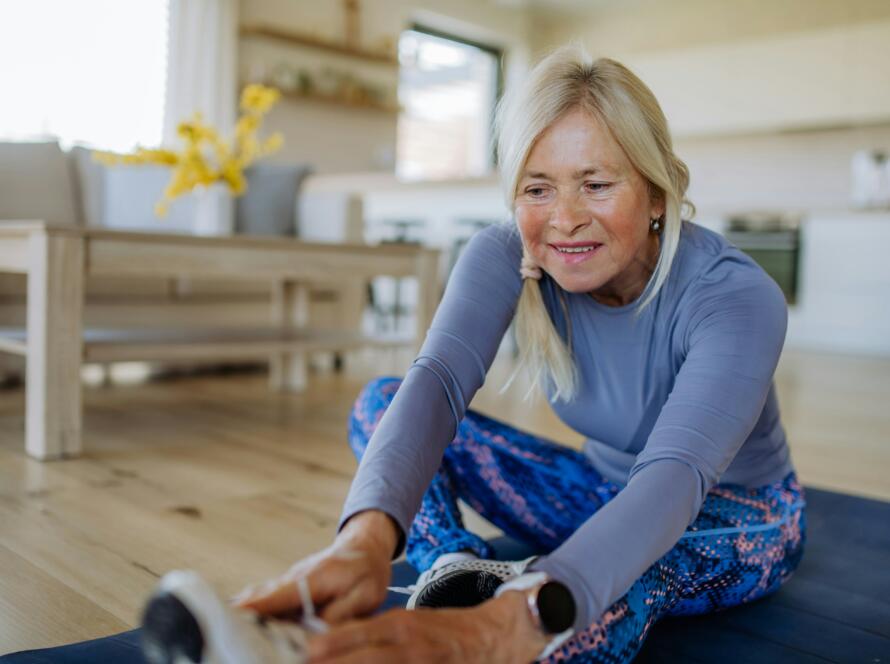Originaly post on Sixtyandme.com
As we age, it’s important to stay active and exercise regularly. In fact, if you’re over 60, exercising is one of the best ways to stay healthy and mobile. But it can also be easy to make mistakes.
Here are three common mistakes seniors make when it comes to exercise:
1 – Forgetting to modify exercises
If you’re new to a workout program, it’s important that you scale back your intensity until you feel comfortable with the movements. This will help prevent injuries and keep you injury-free as long as possible.
Here are some tips to help you modify your exercises:
- If an exercise causes pain, stop immediately. Pain is your body’s way of telling you that something is wrong and needs attention. You can always try again later when you’re feeling better.
- If an exercise makes it difficult for you to complete a full range of motion (ROM), then use less ROM in the movement. For example, if a full squat causes your knees pain, try just a very small bend at the knee (I call these mini squats). Another common area where seniors tend to feel restrictions is the ROM in their shoulder joints. This is another example of where you must listen to your body and move it within a range of motion that feels good for you.
Listening to your body and making modifications will set you up for success in the long run. This will allow for a safer and more comfortable workout routine which will help to keep you consistent in your workouts. The truth is, if a workout feels good then you are more likely to stick with it.
2 – Not adding in strength training workouts
When we’re young, our ability to do intense cardio is great for burning calories and shedding pounds quickly—but as we get older, our bodies need more time to rest and recover from high-impact exercises like running or cycling. That’s why it’s important for people over 60 who are just starting out with an exercise routine to focus on building muscle (strength training exercises) along with some aerobic activity (like walking). This will help you stay strong and healthy while still burning calories at a steady rate over time.
For strength training exercises to be effective all you’ll need is some sort of weight—free weights are fine, resistance bands or even cans filled with water will work too! You can even use your own body weight for strength training exercises. You don’t need expensive or fancy equipment to get started.
Strength training helps to increase your bone density. If you are a senior, strength training should be one of your top priorities. While the goal of a strength-training program is to increase muscle mass, it also helps improve bone density and balance—two things that tend to decline with age.
3 – Include exercises that mobilize joints
Strength training is useless without having good mobility through your joints.
Age-related joint pain is common and can be debilitating. To perform a proper squat you need mobility through your knees and ankles. To do a shoulder press you need mobility through your shoulders and to do a bicep curl you need mobility at the elbow.
I could go on with a hundred different exercises where joint mobility is the foundation to any strength training exercises. Strength training workouts are useless if we don’t have the mobility of the joints to successfully complete the exercise.
If you’re starting to notice tired and achy joints, it’s time to spend some time working to improve your mobility. I like to think of my joints as a chain on a bicycle. When you move your joints this creates synovial fluid (it’s like our bodies grease) to help your joints (the bicycle chain) to move better.
My workout of choice to increase mobility and build full body strength is Pilates. Pilates is a gentle low impact strength training workout that also includes lots of dynamic “flowy” movement to increase joint mobility. Pilates also works to improve your balance, which is something that declines as we age. Be sure to find an instructor that is experienced in working with people over 60 to ensure you are getting the most out of your Pilates practice.
Whatever mobility workout you decide to go with, know that it’s a great compliment to any strength training program and will help to improve your performance in your workouts and in your everyday life.
Conclusion
If you take one thing from this article, I hope it’s this: that no matter what level you are at, everyone needs to do the right kind of exercises for their body!
What type of exercise do you do? How often do you exercise? What is your favorite way to build strength in your body? Have you found an exercise program that has improved your quality of life? I would love to hear about your experiences and favorite workouts!
_
Christine Kirkland is a Certified Pilates Instructor offering online Pilates classes. She specializes in helping adults to increase their balance, strength, mobility and feel their best every day. Sign up for her newsletter to stay up to date on all things Pilates including fitness tips & free classes by visiting her website here.


